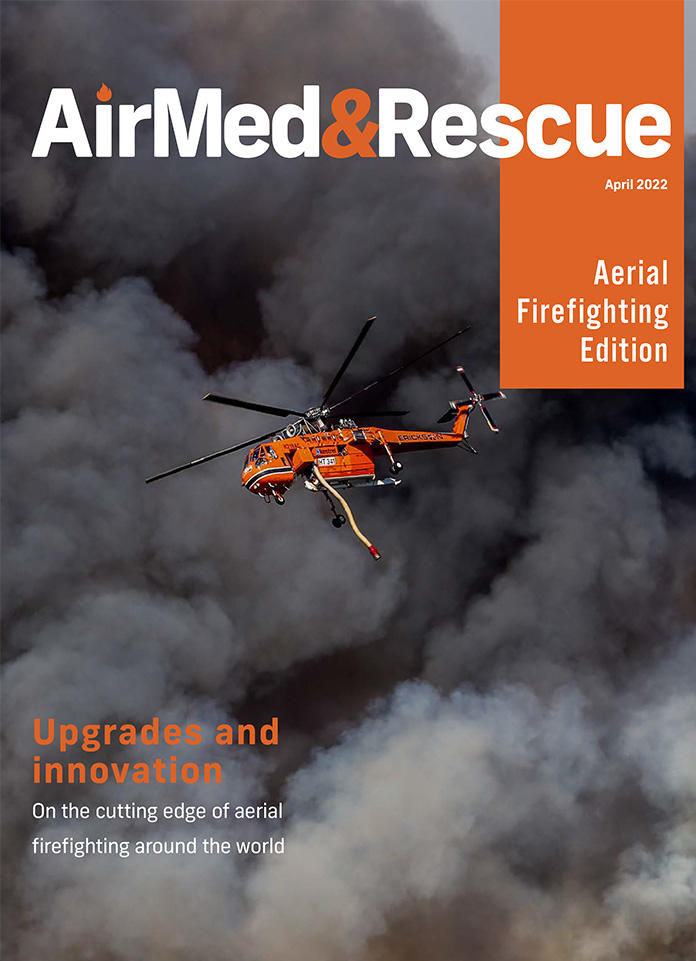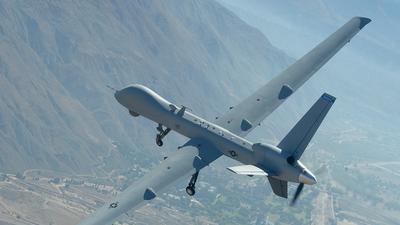A comprehensive aerial response to emergencies

In just the past two years, the world has experienced a barrage of catastrophes, from wildfires to floods, pandemic to war, and the need for adaptable multi-mission aircraft has never been greater
Is there a global need?
The size and number of global emergencies is not decreasing. In just the past two years the world has experienced a barrage of catastrophes, from wildfires to floods, pandemic to war. And all predictions point to further turmoil. The UN’s latest assessment on climate change is clear – it will get worse before it gets better, in part due to climate change, a beast that intensifies all natural disasters. The world is changing – but is the response? Are jurisdictions adapting fast enough to protect people, communities, and resources from threats?
Lack of supply
Countries around the world have purpose equipped aircraft fleets providing military, medical, evacuation, humanitarian, and wildfire response operations. But cracks are becoming evident. There is a limited supply of these specialty aircraft. Emergency air resources are stretched, pushed to limits by an ever-increasing number of disasters spanning all seasons, fueled by climate change. Jurisdictions that used to share resources are no longer always able, with their own fleets dedicated to ongoing crisis response. For instance, provinces in Canada have partnered with states in the US to share aerial firefighting aircraft for decades. But in recent years, there have been too many fires occurring on both sides of the border for either party to always offer aid. A similar predicament is growing around the world, in Europe, the Mediterranean, and Australia, with nations making calls for aerial resources in times of dire need. Specialty modern aircraft for multi-role missions are available for purchase, but the turnaround time from a contracted order to operational deployment could be months, as is the case with the Conair Dash 8-400MRE, which operates as both an airtanker and cargo/passenger/medevac; to years, as in the case of the Viking CL-515 First Responder platform, which operates as both a waterbomber and cargo/medevac.

Aging specialty aircraft
In addition to a limited supply of specialty aircraft, the world faces the predicament of aging aircraft, which demand more and more frequent heavy maintenance; challenging supply chain availability of parts; and rising operational budgets. In addition, and more concerning, aging emergency response aircraft face longer periods of grounded time, unavailable to respond when the call comes.
For instance, fleets of aerial firefighters that tackle wildfire response are often converted from older airframes, used civil or military aircraft. The aerial firefighting environment is significantly different than the average flight environment, meaning fatigue damage will occur at a faster rate. A one hour civil flight with passengers generally flies in a straight line at 25,000ft, it’s pressurized, with one take-off and landing, and experiences average turbulence. The same airframe in an airtanker role, fully loaded, in the same one-hour mission, climbs to 25,000ft then descends 30 minutes later to 3,000ft, partially depressurizing, to conduct a pass over of a forest fire in a relatively gusty environment. It then performs a number of low-level manoeuvres and descends to 125ft above ground level performing a drop, dropping 30 per cent of its total weight, followed with a pull-up and bank manoeuvre, eventually ascending and repressurizing to 25,000ft, before returning to base. Under FAA regulations, both the civil aircraft and the airtanker have flown for one hour and consumed one cycle of airframe life. Metal fatigue damage, however, will show up much sooner and airframe cracks will grow much quicker for airtankers, limiting the lifespan of an airtanker. When they were researching a new modern airframe to replace their legacy fleet of Convair CV580 and Lockheed Electra 188 airtankers, Conair – the largest fixed-wing, privately-owned aerial firefighting company in the world – discovered that some OEMs (Original Equipment Manufacturers) had forecast a damage rate factor in excess of 20 cycles for every single aerial firefighting cycle flown.
Conair, after considering 29 airframes for conversion to airtanker, selected the de Havilland Dash 8-400, with a damage rate factor of 6.5 cycles in the airtanker role, following Transport Canada regulations, the strictest in the world for aerial firefighting operations. A safe return to base from a mission protects not only crew, it means the airtanker is operational to respond to the next emergency.

Multi-role response
Budgets are limited. Trained crews for technical operations are limited. The type and number of emergencies are vast, located in all areas of the world. An emergency response aircraft that can perform more than one type of mission can be invaluable, fast, flexible and versatile. Sécurité Civile in France has operated the Dash 8-400 Multi Role for over 15 years, a fleet of six with two more on order, supporting both France and countries around the world with emergency response operations. The specialized multi-role aircraft can attack and fight wildfires; transport vital emergency supplies; transport medical, military or crisis personnel; evacuate residents; medevac critically ill patients; and ship humanitarian relief supplies. For example, the aircraft was sent to Haiti in 2020 for medical evacuations following the earthquake that affected more than 300,000 people; it responded to Conakry in Guinea, transporting equipment to Ebola virus treatment centers; and most recently, the emergency response aircraft flew humanitarian cargo and critical medical supplies to Poland from France, in support of Ukraine.
While urban, populated centers enjoy easy access to supplies and services, those residing in remote communities have limited means of transportation. When faced with disaster, these vulnerable communities need fair and equal access to services. The Dash 8-400 Multi Role reaches isolated communities, landing on paved, gravel or ice runways, shorter than required for larger aircraft, operating year-round in diverse geography.
Water needs a partner: retardant
Fighting wildfires is a global concern, with the number and intensity increasing. Water, long viewed as the solution to taming wildfires so firefighters on the ground can contain flames, is no longer a match for the intense wildfire behavior in recent years. Due to high heat, wind and low humidity, water dropped from aircraft is evaporating faster, sometimes with only 50 per cent of the drop reaching the fuel on the ground. Foam additives can expand water, insulating it, allowing water to penetrate deeper into the fuel layer and remain on the surface longer. Similarly, gel clings to water, making it heavier, falling faster to reach the fuel before evaporating. Water’s benefits, although immediate, are short-lived, gone as soon as the water evaporates. A solution called retardant slows combustion, certified safe for use in the wildfire environment. Mixed with water, retardant coats vegetation, clinging to the fuel after water evaporates. Retardant’s benefits are immediate and longer lasting. Retardant lines the perimeter of the fire, slowing its progression, while water drenches the interior of the fire, cooling its heat.
The use of both retardant and water to fight aggressive wildfires has been relied on for decades in North America and is being adopted in South America, Australia and Europe, with countries including France, Spain, Italy, Turkey, Israel, Portugal, Morocco, and Tunisia using both suppressants and retardants to slow flames. But is adoption happening fast enough to help fight aggressive wildfires? Countries have SEAT (Single Engine Airtankers), but are these, or helicopters, large enough to provide a significant enough impact to affect large, raging wildfires that require immediate, long containment lines? The US has been using fleets of LATs (Large Airtankers) for decades and is experiencing periods where demand outreaches supply. Is climate change creating crises that countries are struggling to keep up with using current fleets?

Is it time to share air assets for emergency response?
Investing in large aircraft requires significant capital expense and operational cost. Investing in a multi-role aircraft that can accomplish a wide variety of missions, around the world, provides a compounded return. Sharing these specialty air assets could benefit multiple countries, offsetting costs, operational maintenance, crewing, and specialty training. A cost-sharing approach has been accomplished successfully in aerial firefighting in Canada for decades. Provinces across Canada share airtanker resources, strategically utilizing mobile retardant tanker bases to cover nearly 1 million sq km for a rapid response. The US and Canada also share resources, with airtankers responding when needed across borders. And Sécurité Civile in France shares its multi-role fleet, responding when requested to countries in need. Could nations create multi-role fleets to share between jurisdictions? Would it be a positive step if the European Commission created a multi-role fleet through rescuEU to deploy to emergencies across Europe, ensuring aerial resources are available when the call comes?
Is it time for CARE?
CARE is the Comprehensive Aerial Response to Emergencies, a fleet of aircraft dedicated to supporting citizens through crisis. The aircraft is Conair’s Dash 8-400MRE, a multi-role airtanker to fight wildfires and transport critical personnel, supplies and medical aid to countries in need. It is available now. Is it time?

April 2022
Issue
This edition of AirMed&Rescue contains in-depth analysis of firefighting aircraft and equipment innovation, the pros and cons of amphibious and land-based air tankers, using drones as fire surveillance machines, and the issue of federal versus state coordination of aerial firefighting assets in the US.
Conair Group
Conair is a global leader in specialty aerial firefighting operations, delivering an extensive range of next-generation aerial fire control products and services to a variety of national and international customers and partners.


